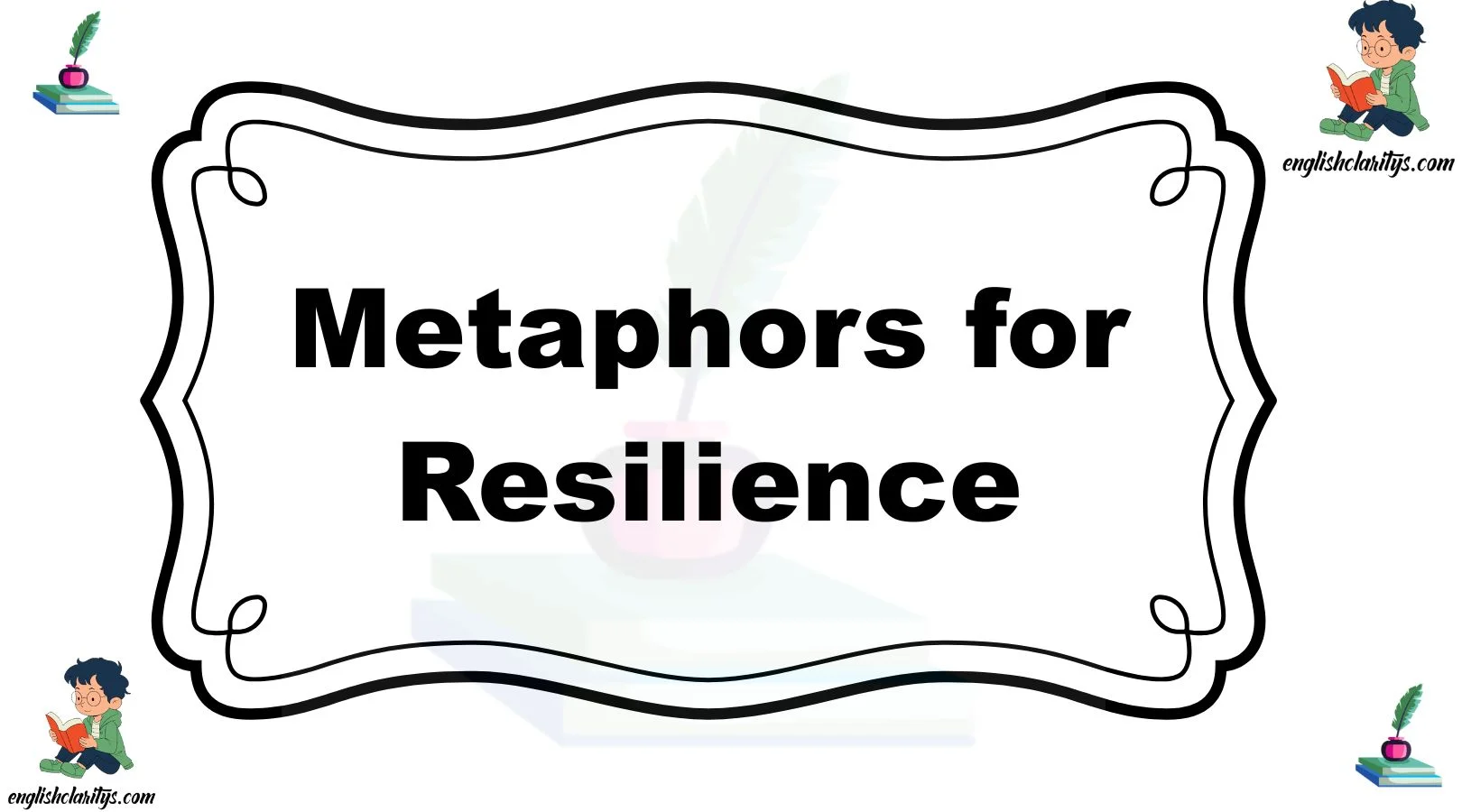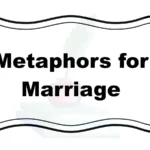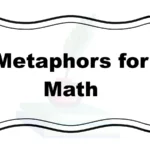In life’s unpredictable journey, finding the perfect phrase to convey unwavering strength can transform a simple message into a deeply meaningful one. When we choose the right words, we offer warmth, encouragement, and a sense of shared understanding. Each of the 30 metaphors below paints a vivid picture of resilience, helping you express compassion and admiration with thoughtful phrasing.
Whether you’re writing a card, sending a text, or delivering a speech, these metaphors will empower your message to shine. Let’s explore these creative alternatives and see how they can breathe fresh life into your expressions of unyielding courage.
1. Diamond in the Rough
Meaning: An unexpected source of brilliance born through pressure.
Explanation: Just as a diamond forms under intense heat and pressure, someone can reveal remarkable resilience through challenges.
Example: “After months of struggles, her solution emerged like a diamond in the rough, shining brightly.”
3 other ways to say this:
- Hidden gem
- Raw brilliance
- Unpolished treasure
2. Phoenix Rising
Meaning: Rebirth and renewal from destruction.
Explanation: Like the mythical bird reborn from its ashes, this metaphor highlights triumphant comebacks after setbacks.
Example: “Following the merger failure, his career felt like a phoenix rising—stronger and more determined.”
3 other ways to say this:
- Ashes to glory
- Reborn anew
- Rising from the ashes
3. Oak with Deep Roots
Meaning: Stability anchored in adversity.
Explanation: An oak withstands storms because of its strong root system, symbolizing lasting steadfastness.
Example: “Through family crises, she stood like an oak with deep roots, unshaken.”
3 other ways to say this:
- Firmly grounded
- Rooted like a sequoia
- Anchored in the earth
4. Bouncing Ball
Meaning: Quickly recovering from impact.
Explanation: A ball springs back after hitting the ground, illustrating swift recovery.
Example: “Despite the budget cuts, their enthusiasm rebounded like a bouncing ball.”
3 other ways to say this:
- Springing back
- Rebounding spirit
- Elastic determination
5. Ship Weathering the Storm
Meaning: Enduring turbulence with composure.
Explanation: A sturdy vessel navigates rough seas without capsizing, embodying calm perseverance.
Example: “Through every corporate shakeup, she was the ship weathering the storm, steady at the helm.”
3 other ways to say this:
- Sailing through tempests
- Calm amid chaos
- Steadfast voyage
6. Steel Spring
Meaning: Unwavering tension and return to form.
Explanation: A steel coil resists deformation and bounces back, reflecting inner strength.
Example: “After the failure, his spirit snapped back like a steel spring, ready to try again.”
3 other ways to say this:
- Coiled determination
- Tension that holds
- Unbendable resolve
7. Sunflower Facing the Sun
Meaning: Turning toward positivity.
Explanation: A sunflower unfailingly seeks light, symbolizing optimism and steady growth.
Example: “In every challenge, she was the sunflower facing the sun, finding hope.”
3 other ways to say this:
- Seeking the light
- Turning toward hope
- Rays of resilience
8. Marathon Runner
Meaning: Endurance over a long journey.
Explanation: Completing a marathon demands sustained effort and mental grit, mirroring life’s challenges.
Example: “Her recovery felt like a marathon runner crossing the finish line—slow but certain.”
3 other ways to say this:
- Long-distance grit
- Steady pacing
- Endurance champion
9. Redwood Tower
Meaning: Majestic endurance over centuries.
Explanation: Redwood trees stand tall for hundreds of years, representing timeless perseverance.
Example: “Through decades of change, his wisdom stood like a redwood tower.”
3 other ways to say this:
- Century-old strength
- Towering steadfastness
- Evergreen resilience
10. Sailboat Harnessing the Wind
Meaning: Using adversity to move forward.
Explanation: A sailboat turns wind into propulsion, showing how challenges can become catalysts.
Example: “After setbacks, she became the sailboat harnessing the wind, advancing with new momentum.”
3 other ways to say this:
- Riding the breeze
- Turning gusts to gains
- Wind-driven progress
11. Locked Safe
Meaning: Secure protection through hardship.
Explanation: A safe guards its contents despite external force, illustrating protected perseverance.
Example: “Her hope was a locked safe, keeping dreams secure through turmoil.”
3 other ways to say this:
- Fortified heart
- Unbreakable vault
- Secure stronghold
12. Trampoline Effect
Meaning: Bouncing back higher than before.
Explanation: A trampoline flings you upward beyond your starting point, symbolizing growth after setback.
Example: “Following criticism, his confidence soared with a trampoline effect.”
3 other ways to say this:
- Springboard success
- Leap forward
- Bounce-up surge
13. Hearth in the Cold
Meaning: Warmth that endures hardship.
Explanation: A hearth provides steady warmth in winter, reflecting comfort and resilience.
Example: “Her friendship was the hearth in the cold, a source of warmth during trials.”
3 other ways to say this:
- Warm beacon
- Steady flame
- Comforting glow
14. Lighthouse in the Fog
Meaning: Guiding light amid confusion.
Explanation: A lighthouse cuts through mist, offering direction when visibility is poor.
Example: “His advice acted like a lighthouse in the fog, leading us forward.”
3 other ways to say this:
- Beacon of clarity
- Guiding glow
- Shining compass
15. Tortoise in a Race
Meaning: Slow but steady progress wins.
Explanation: The tortoise’s persistence outlasts speed alone, symbolizing consistent effort.
Example: “She tackled the project as the tortoise in a race, step by step.”
3 other ways to say this:
- Steady climber
- Consistent mover
- Enduring pace
16. Mountain Path
Meaning: Steep journey toward the summit.
Explanation: Climbing a mountain trail demands focus and tenacity, reflecting life’s uphill battles.
Example: “Her climb through adversity was like navigating a mountain path, each step earned.”
3 other ways to say this:
- Uphill trek
- Summit pursuit
- Ascending challenge
17. Well-Tuned Instrument
Meaning: Harmonious strength under pressure.
Explanation: A finely tuned instrument holds its pitch, even under demanding performances.
Example: “Under stress, he remained a well-tuned instrument, performing flawlessly.”
3 other ways to say this:
- Perfect harmony
- Pitch-perfect resolve
- Steady melody
18. Bonsai Under Pressure
Meaning: Growth shaped by constraint.
Explanation: Bonsai trees thrive under deliberate shaping, mirroring resilience shaped by adversity.
Example: “Her talent emerged like a bonsai under pressure, beautifully refined.”
3 other ways to say this:
- Sculpted strength
- Controlled bloom
- Crafted endurance
19. Shield in Battle
Meaning: Protection against relentless force.
Explanation: A shield absorbs blows, representing defensive resilience.
Example: “Her optimism was the shield in battle, deflecting doubts.”
3 other ways to say this:
- Protective barrier
- Guarded resolve
- Defensive armor
20. River Carving Rock
Meaning: Gentle persistence shaping the immovable.
Explanation: Over time, a river’s flow erodes stone, showcasing patient perseverance.
Example: “Her consistent efforts were the river carving rock, achieving change.”
3 other ways to say this:
- Steady erosion
- Flowing determination
- Patient sculptor
21. Climbing Vine
Meaning: Ascending despite obstacles.
Explanation: A vine finds its way upward around barriers, symbolizing adaptive resilience.
Example: “Through corporate red tape, she grew like a climbing vine, finding a path.”
3 other ways to say this:
- Wrapping persistence
- Adaptive ascent
- Root-to-canopy climb
22. Fire-Forged Steel
Meaning: Strength improved by intense trials.
Explanation: Steel heated in fire gains hardness, illustrating resilience strengthened by hardship.
Example: “Her leadership was like fire-forged steel, tempered by challenges.”
3 other ways to say this:
- Tempered resolve
- Heat-hardened grit
- Forged endurance
23. Eye of the Storm
Meaning: Calm at the center of chaos.
Explanation: The storm’s eye is peaceful amid fury, symbolizing inner tranquility.
Example: “Even in turmoil, she remained the eye of the storm, composed.”
3 other ways to say this:
- Calm center
- Tranquil core
- Serene nucleus
24. Phoenix Feather
Meaning: A remnant of rebirth.
Explanation: A single feather evokes the whole phoenix’s regenerative power, reflecting lasting hope.
Example: “Her optimism was a phoenix feather, promising renewal.”
3 other ways to say this:
- Ashen promise
- Feather of revival
- Spark of rebirth
25. Granite Boulder
Meaning: Immovable strength.
Explanation: Granite withstands erosion, symbolizing unyielding resilience.
Example: “Her resolve stood like a granite boulder, steadfast.”
3 other ways to say this:
- Unshakable rock
- Solid bedrock
- Immovable mass
26. Bloom Among Thorns
Meaning: Flourishing amid adversity.
Explanation: A flower thriving in a thorny bush showcases beauty and courage in tough conditions.
Example: “Her creativity was a bloom among thorns, bright despite challenges.”
3 other ways to say this:
- Flowering in hardship
- Thorn-pierced blossom
- Beauty in struggle
27. Anchor in Rough Seas
Meaning: Stability through turmoil.
Explanation: An anchor holds firm against waves, representing steady grounding.
Example: “His friendship was the anchor in rough seas, keeping me safe.”
3 other ways to say this:
- Grounded mooring
- Steady hold
- Secure tether
28. Sun Breaking Through Clouds
Meaning: Hope emerging from darkness.
Explanation: A sunbeam piercing clouds embodies renewed optimism.
Example: “After the setback, her smile was the sun breaking through clouds.”
3 other ways to say this:
- Ray of hope
- Light after gloom
- Bright horizon
29. Seed Sprouting Through Concrete
Meaning: Life finding a way against barriers.
Explanation: A seedling pushing through pavement symbolizes determined growth.
Example: “His career advanced like a seed sprouting through concrete, unstoppable.”
3 other ways to say this:
- Pavement breaker
- Urban sprout
- Barrier-busting seed
30. Unbroken Chain
Meaning: Continuous strength across links.
Explanation: A chain remains strong when every link holds, symbolizing collective resilience.
Example: “Our team acted as an unbroken chain, supporting each other.”
3 other ways to say this:
- Seamless link
- Solid connection
- Enduring bond
Conclusion:
Resilience shines brightest when captured in a vibrant language. These 30 metaphors offer fresh, empathetic ways to honor the unyielding spirit of someone facing difficulty. By weaving these images into your words—whether in writing or speech—you create messages that feel deeply personal and lift the heart. Choose the metaphor that resonates, and watch how it transforms your expression of courage, hope, and unbroken resolve.
MCQs:
1. What does the metaphor “Diamond in the rough” imply about a person?
A) They are untrustworthy
B) They are naturally lazy
C) They have hidden strength or brilliance
D) They avoid pressure
Answer: C) They have hidden strength or brilliance
2. Which metaphor suggests someone bends but doesn’t break under pressure?
A) Solid as steel
B) Willow in the wind
C) Running on fumes
D) Glass heart
Answer: B) Willow in the wind
3. If someone is described as a “Phoenix rising from the ashes,” what are they doing?
A) Hiding from problems
B) Rebuilding after hardship
C) Avoiding their past
D) Falling apart
Answer: B) Rebuilding after hardship
4. What quality does the metaphor “Rock in a storm” emphasize?
A) Flexibility
B) Silence
C) Steadfastness and stability
D) Fragility
Answer: C) Steadfastness and stability
5. What does “Steel spine” metaphorically suggest?
A) The person is stiff and emotionless
B) The person is cold-hearted
C) The person has inner strength and courage
D) The person lacks empathy
Answer: C) The person has inner strength and courage
6. The metaphor “Burning candle that never dies” refers to:
A) Passion that consumes
B) Endless pain
C) Eternal hope and strength
D) Fear of darkness
Answer: C) Eternal hope and strength
7. What does the phrase “Tree with deep roots” suggest?
A) A person who is slow to change
B) A person firmly grounded and resilient
C) Someone who moves often
D) A person who is stuck in the past
Answer: B) A person firmly grounded and resilient
8. Which metaphor reflects quiet strength through flexibility?
A) Iron shield
B) Unshaken mountain
C) Bamboo in the wind
D) Iceberg in the ocean
Answer: C) Bamboo in the wind
9. A person who always finds a way through difficulties might be described as:
A) A cracked vase
B) A puzzle missing a piece
C) A river carving through stone
D) A ship lost at sea
Answer: C) A river carving through stone
10. The metaphor “Unbroken thread” conveys:
A) Persistence and connection despite hardship
B) Isolation
C) Confusion
D) Tangled relationships
Answer: A) Persistence and connection despite hardship
11. What does “Iron in the soul” describe?
A) Physical exhaustion
B) Lack of emotion
C) Deep-seated strength and determination
D) Bitterness
Answer: C) Deep-seated strength and determination
12. Someone who bounces back quickly after challenges can be called:
A) A glass ball
B) A rubber band
C) A shadow in the night
D) A paper crane
Answer: B) A rubber band
13. The metaphor “Storm survivor” implies:
A) Someone who loves chaos
B) A person who causes problems
C) A person who endures hardship
D) Someone always angry
Answer: C) A person who endures hardship
14. “A flame that won’t go out” is best used to describe:
A) Repeated anger
B) Enduring passion or hope
C) Burning rage
D) Fleeting desire
Answer: B) Enduring passion or hope
15. Which metaphor describes someone who keeps moving forward despite obstacles?
A) A shadow behind the light
B) A clock with no hands
C) A train through a tunnel
D) A mirror with cracks
Answer: C) A train through a tunnel
Frequently Asked Questions:
1. What is a metaphor for resilience?
A metaphor for resilience is a vivid, symbolic way to describe a person’s strength, perseverance, or ability to overcome hardship without directly stating it. These expressions help communicate resilience using imagery—like comparing someone to a “phoenix rising from the ashes” or a “tree with deep roots.”
2. Why should I use metaphors when talking about resilience?
Metaphors add emotion, creativity, and relatability to your message. Instead of plainly saying someone is “strong,” using a metaphor like “a river carving through stone” gives a more memorable, inspiring, and empathetic way to celebrate their endurance. It helps the listener or reader feel the meaning, not just understand it.
3. Are metaphors for resilience suitable for both personal and professional use?
Yes! These metaphors are perfect for personal encouragement, motivational writing, public speeches, or even team-building in workplaces. Whether you’re comforting a friend or inspiring a team, well-chosen metaphors can create a strong emotional connection.
4. How do I choose the right metaphor for someone?
Think about the person’s personality, journey, and challenges. Are they quietly strong like “bamboo in the wind” or have they overcome massive setbacks like a “phoenix rising”? The key is to match the metaphor’s tone to the emotion you want to express—gentle, powerful, determined, or reflective.
5. Can I create my own metaphors for resilience?
Absolutely! Metaphors are all about imagination and storytelling. If you see someone as a “light in the fog” or a “bridge over rough water,” use it! What matters most is that the metaphor feels personal, thoughtful, and sincere to both you and your audience.




